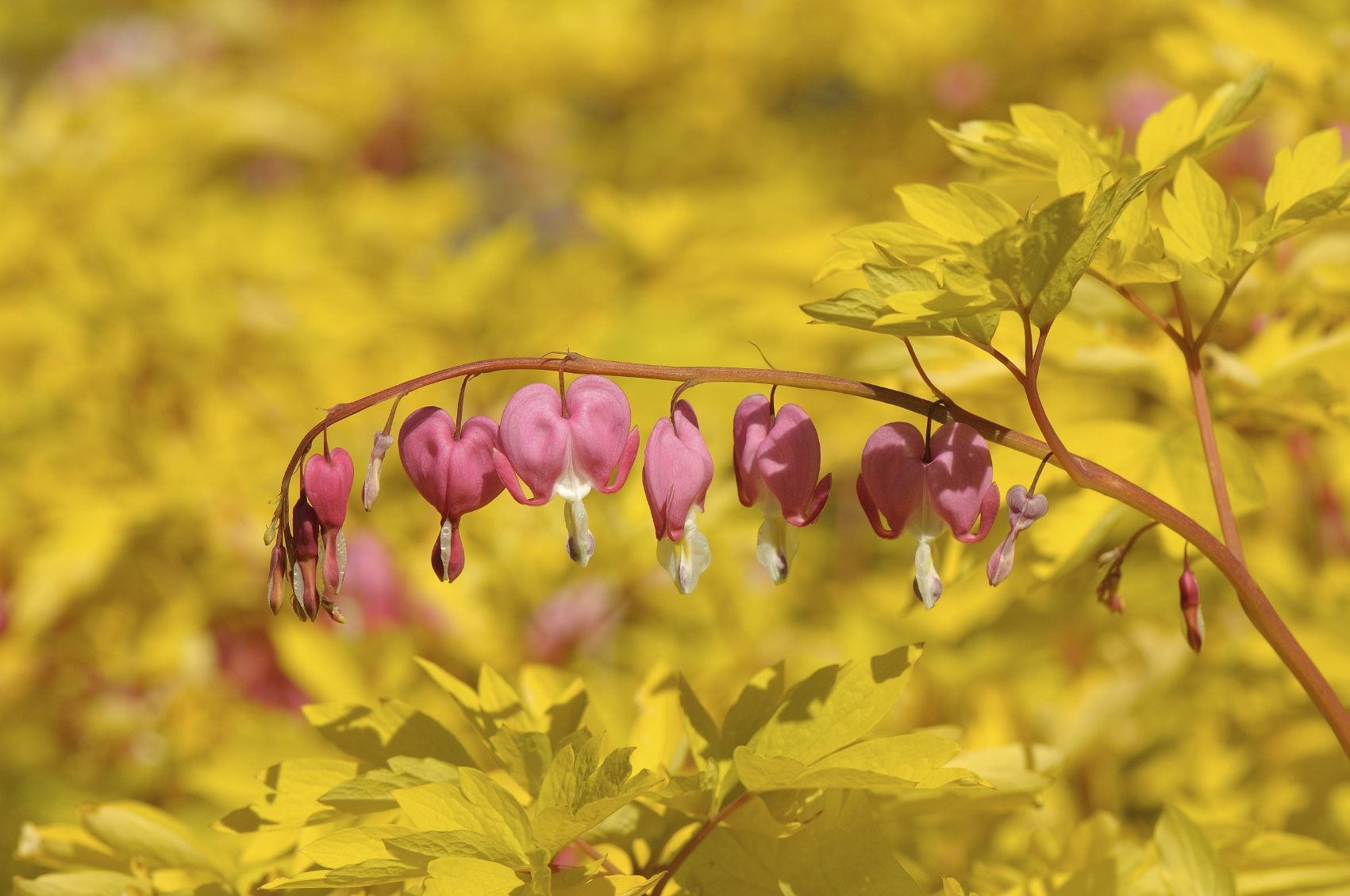Bleeding Heart Has Yellow Leaves: Treating Yellow Bleeding Heart Plants


Most of us would recognize a bleeding heart plant at first sight, with its pillowy heart-shaped flowers and delicate foliage. Bleeding hearts can be found growing wild around North America and are common old-fashioned garden choices too. These perennials tend to die back when temperatures get too hot, signaling it is time for dormancy. Yellowing bleeding heart plants in mid-summer are part of the life cycle and completely normal. A bleeding heart with yellow leaves at any other time of the year may be an indication of cultural or other issues. Keep reading to find out why your bleeding heart has yellow leaves.
Naturally Yellowing Bleeding Hearts
Bleeding hearts may be one of the first flowers peeking out of your woodland garden. The plant is found wild in forest edges, dappled glades and shady meadows with organic rich soil and consistent moisture. Bleeding heart plants can perform well in full sun locations too, but they will die back quickly when summer temperatures arrive. Those that are located in shadier spaces hold onto their green foliage a bit longer, but even these will enter a dormant period called senescence. This is a normal process for the plant, as leaves fade and die back. Yellowing bleeding heart plants in summer signal the end of the growing period for this cool season plant. Hot temperatures provide the cues that it is time to rest until favorable conditions arrive again. If your bleeding heart plant has yellowing leaves in early to mid-summer, it is likely just the natural progression of the plant’s life cycle.
Other Reasons for Bleeding Heart Leaves Turning Yellow
Bleeding heart plants are found in United States Department of Agriculture zones 2 to 9. This wide range means the plants are quite hardy and adaptable. While it is true the plants enter senescence in mid-summer, when you notice bleeding heart leaves turning yellow, the plant may have foliage problems due to many other factors. Overwatering may be one cause of a bleeding heart with yellow leaves, fungal disease and insect pests are another.
Insufficient Watering
Overwatering is a common cause of plant leaves fading and yellowing. The bleeding heart enjoys moist soil but cannot tolerate a boggy area. If soil is not well draining, the plant’s roots are immersed in too much water and fungal diseases and damping off can ensue. Limp, fading leaves may appear to be a sign of dryness but, in fact, can be caused by excess moisture. Treating yellow bleeding heart plants in moist areas starts with checking soil conditions and then amending drainage with sand or other grit. Alternatively, move the plant to a more favorable situation. Underwatering is also a reason for fading leaves. Keep the plant moderately moist but not soggy.
Lighting and Soil
Another reason a bleeding heart plant has yellow leaves might be lighting. Although, it is natural for the plant to die back when warm temperatures arrive, in some zones, plants in full sun will die back in spring in response to too much heat and light. Try moving the plant in fall or early spring to a dappled lighting situation and see if that helps. Soil pH is another potential cause of yellowing leaves. Bleeding heart plants prefer acidic soil. Plants growing in alkaline areas will benefit from the addition of sulfur or peat moss. It is preferable to amend soil six months before planting in the area.
Bugs and Disease
One of the more common insect pests is the aphid. These sucking insects drink sap from a plant, sucking its life giving juices and diminishing the plant’s stores of energy. Over time, leaves may curl and become speckled and, in severe cases, the stems will become limp and discolored. Use forceful sprays of water daily for treating yellow bleeding heart plants plagued by aphids. In extreme cases, use a horticultural soap to combat the pests. Fusarium wilt and stem rot are but two of the common diseases of bleeding heart plants. Fusarium wilt causes the lower leaves to yellow initially, while stem rot will produce a whitish, slimy coating over all parts of the plant with wilted, discolored foliage. In both cases, the plants should be removed and discarded. Verticillium wilt also causes yellowed foliage but it initiates with wilted leaves. Remove the plant and all its roots and destroy. Plants in well-drained soil are less plagued by these diseases but be cautious where you acquire your plants. These diseases can live in contaminated soil and plant matter.
Variety
Finally, check the variety. Dicentra spectabilis ‘Gold Heart’ is a specific type of bleeding heart that naturally produces the same heart-shaped blooms as others but its foliage is yellow rather than the typical green.
Sign up for the Gardening Know How newsletter today and receive a free copy of our e-book "How to Grow Delicious Tomatoes".

Bonnie Grant is a professional landscaper with a Certification in Urban Gardening. She has been gardening and writing for 15 years. A former professional chef, she has a passion for edible landscaping.